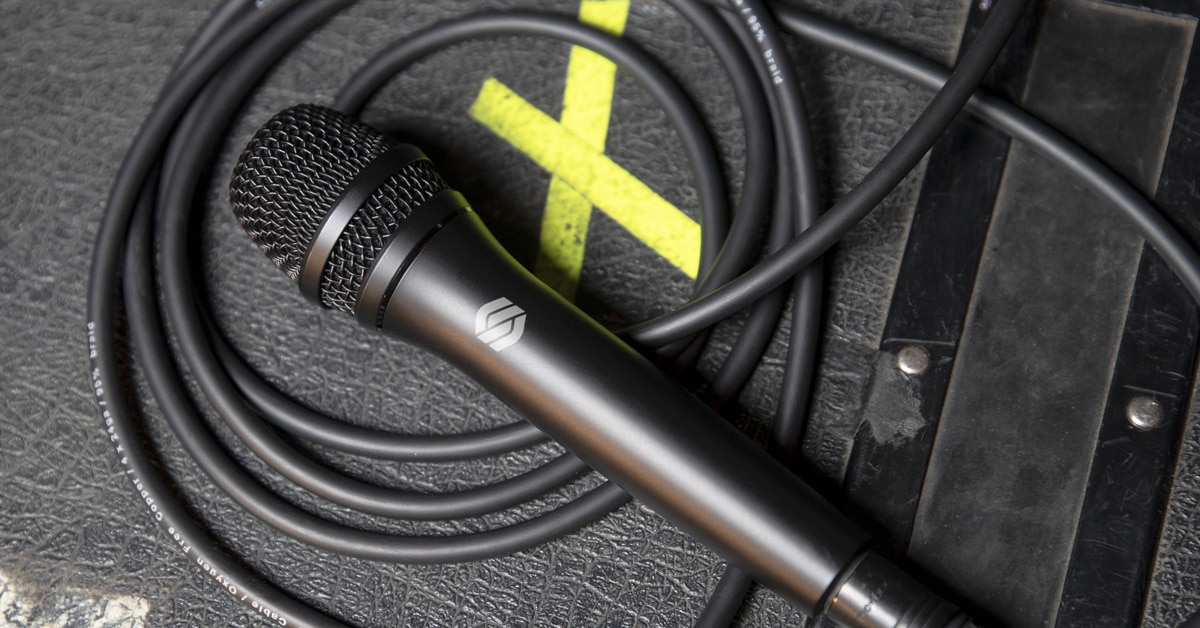Sure, it's generally true that a mic's price reflects the quality of the sound it’s capable of reproducing. However, a little research will show you there are plenty of reasonably priced mics that are capable performers in many respects. In fact, many of these models copy the basic structures of microphones costing many times more. Understanding how different types of microphones function and what they’re intended for will help equip you to improve your live performances and enhance your recordings.
To help you find the right mic to match your budget and needs, this guide will cover the most important characteristics of the many different microphone types and models.
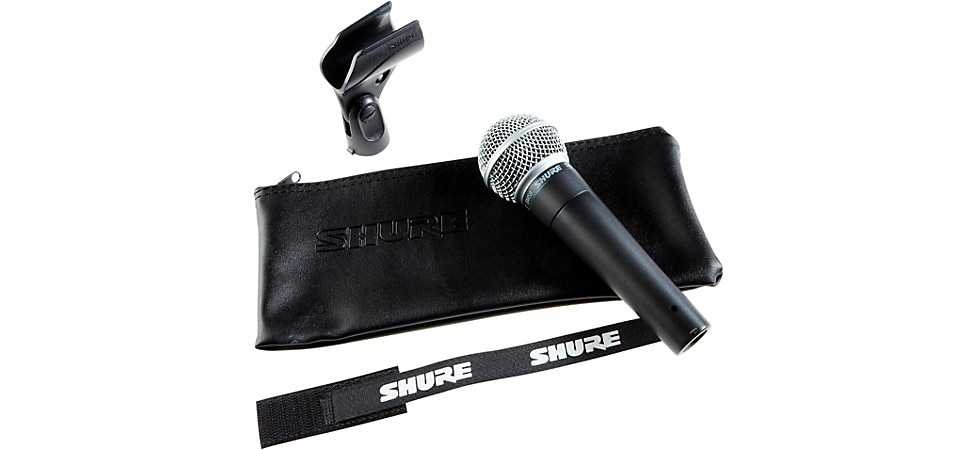
The super affordable (and super durable) Shure SM58 dynamic mic is a go-to vocal mic for both the stage and the studio.
Table of Contents
How Will You Use Your New Mic?
Check, Check: Understanding Microphone Specs
What Microphone Specs Don't Tell You
Types of Microphones and Their Applications
Application-Specific Dynamic Mics
Wireless Microphones
Condenser Microphones
USB Microphones
Microphone Packages
Microphone Accessories
Signing Off: Some Final Comments
How Will You Use Your New Mic?
The most important thing to ask yourself when choosing a microphone is how you plan to use it. Will you be using it onstage for vocals or to mic an instrument? Is it intended for home-studio recording? Or are you looking for something that can perform well in either situation?
You want to match the mic to both the environment you'll use it in and the gear you'll use it with. For instance, it might not make a lot of sense to spend thousands on a Neumann studio mic if you plan to use it for recording basic demos in your bedroom studio. The acoustics will likely be less than perfect and you'll want to couple it with a high-end mic preamp, bringing your total cost up quite a bit. Consequently, a less sensitive and more affordable microphone might be a better choice.
If you want to find a single mic that will serve you both in the studio and on the stage, a number of models will be up to the task. The Shure SM57, for example, is a popular, go-to mic that gets extensive use in both settings.
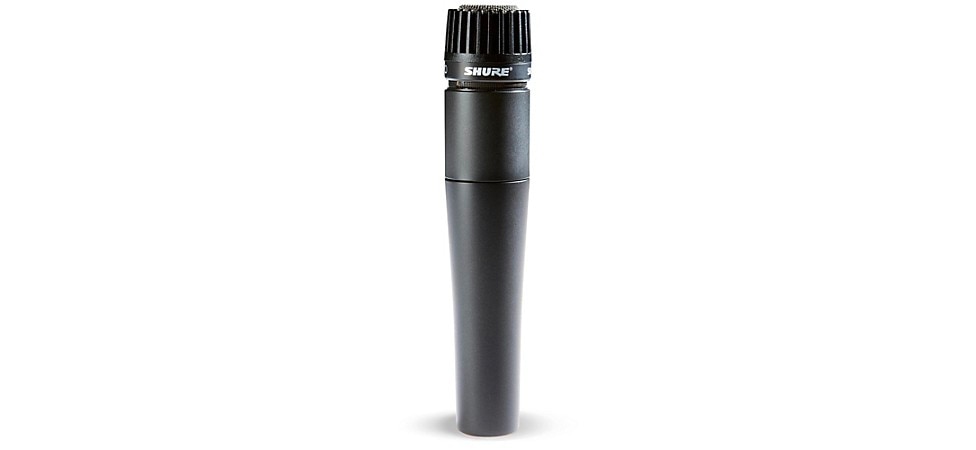
The Shure SM57 has a solid design, performing equally well on stage or in the studio, capturing vocals and instruments.
Check, Check: Understanding the Specs
Getting some fundamental knowledge on microphone specifications and terminology under your belt will help you select a mic that best suits your needs. Here are the primary specs and terms you will often see in mic descriptions:
Polar Patterns
The polar pattern is the shape of a mic's field of sensitivity, or the directions from which it accepts or ignores incoming sounds. An omnidirectional mic responds to sounds coming from all directions. A bi-directional mic, also known as a Figure 8 microphone, picks up sounds from east and west while excluding sounds from north and south. A unidirectional mic primarily hears sounds from one direction and excludes sounds from other directions.
Unidirectional mics are the most common type, and they come in three polar patterns: cardioid, supercardioid and hypercardioid. All three of these patterns reject rear-axis and off-axis sounds coming from behind the mic or from the sides.
The cardioid pattern is roughly a heart shape (hence its name), which makes the mic most sensitive to sounds from straight on and from the sides, but rejects sounds from 180 degrees opposite the direction the mic is aimed.
The supercardioid mic accepts a little more sound from a 180-degree field, but rejects more from each side. The hypercardioid allows yet more sound from 180 degrees but rejects more of the sound coming from 90 or 270 degrees.
Polar patterns are important when you are working in a noisy setting, such as when miking a vocalist in a band. Cardioid, supercardioid, and hypercardioid mics will tend to exclude all the sounds except the voice of the singer, thus preventing the signal from becoming muddied or producing feedback.
Learn more about polar patterns and hear some fantastic demos in our feature on the AKG C414.
Multi-Pattern Microphones
Some microphones are multi-pattern. In other words, their polar patterns can be changed (e.g. from omnidirectional to cardioid) by means of a switch or by interchangeable capsules. This capability gives the mic added versatility in various settings.
Frequency Response
A microphone’s frequency response refers to the range of frequencies, from low to high, that a microphone will pick up. This range is referred to by its lowest and highest frequencies, measured in hertz. A microphone with a frequency response range of around 80 Hz to 15 kHz would make a good choice for a vocal mic. However for miking snares and toms, you would look for a range that starts lower, at around 50 Hz, and for a bass drum mic, you will want a low end of 40 Hz or even lower, down to 30 Hz.
Response Curves
It is important to note that frequency response only tells you the overall range a mic can reproduce. How it performs at different frequencies is another matter, and this performance is what gives a mic its character.
The shape of a microphone’s frequency responsiveness is called its response curve. Because it starts out at zero on the low end and drops off to zero at the high end, it takes the form of a curve when graphed. Within this overall curve, there will be peaks and dips in certain places that give the mic a certain character and make it more suited to certain applications. For example, a mic intended for vocals may have a spike in its upper midrange that results in smoother or more intelligible reproduction of voices.
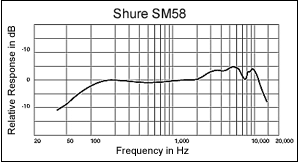
The frequency response curve of a Shure SM58 microphone.
Sensitivity and SPL-Handling Capability
Sensitivity refers to how quiet a sound the mic can detect, and it is expressed using different systems. Regardless of the system, it is perhaps enough to know that the lower the number, the more sensitive the microphone is.
SPL stands for “sound pressure level” and is expressed in decibels (dBs). It describes the maximum volume that a mic can handle, so, in a way, it is the opposite of sensitivity. This is important if the mic must deal with loud instruments such as drums. An average level is around 100 dB; a high SPL is 130 dB.
Proximity Effect
Proximity effect is not given as a specification, but is an important mic characteristic that is sometimes mentioned in descriptions.
Proximity effect causes bass frequencies to become more pronounced as the sound source moves closer to the mic. This is desirable for singers who "work the mic" to create effects. A recording engineer might select a mic with a strong proximity effect for close miking an instrument to bring out its bass tones.
Condenser mics generally produce more proximity effect than dynamic mics.
What the Specs Don't Tell You
The characteristics of a microphone involve more than just the specifications you read in its description. The product’s structure, the kind of metals used and the precision of its manufacturing can all greatly affect its performance.
That’s why it's fair to say that price itself is a significant specification. Keep in mind that listening is the best way to really know the differences between a great mic and a lesser one.
Types of Microphones and Their Applications
Most microphones fall into one of two categories: dynamic mics and condenser mics – and these types are characterized by a number of important differences.
Typically, dynamic mics are more rugged than condensers, making them more suitable for on-stage use. Condensers, on the other hand, are more sensitive and more delicate, so they are most often used for studio recording. These are generalities however; there are dynamic mics that are often used in recording settings, and condenser models designed to handle the rigors of stage work.
Another distinction is the mic’s power requirement. Dynamic mics operate without a power source, while most condensers need a battery or phantom power supply (from a mixing board, preamp, or dedicated external power supply) to function.
Let’s take a closer look at the different microphone types to zero in on the best option for your purposes.
Dynamic Microphones
Dynamic microphones use an inductive coil connected to a diaphragm and placed within the field of a permanent magnet. As the diaphragm moves, it moves the coil, thus varying the voltage the coil produces. These subtle shifts in output voltage shape the mic’s output.
These mics are usually quite rugged, and have high SPL-handling capability. Most have internal shock mounting to allow hand use, and their polar patterns reject off-axis sounds. These are all reasons that dynamic mics tend to perform well in live sound situations, though some also are used regularly for recording. The Shure SM58 has been both a studio and stage staple for many years.
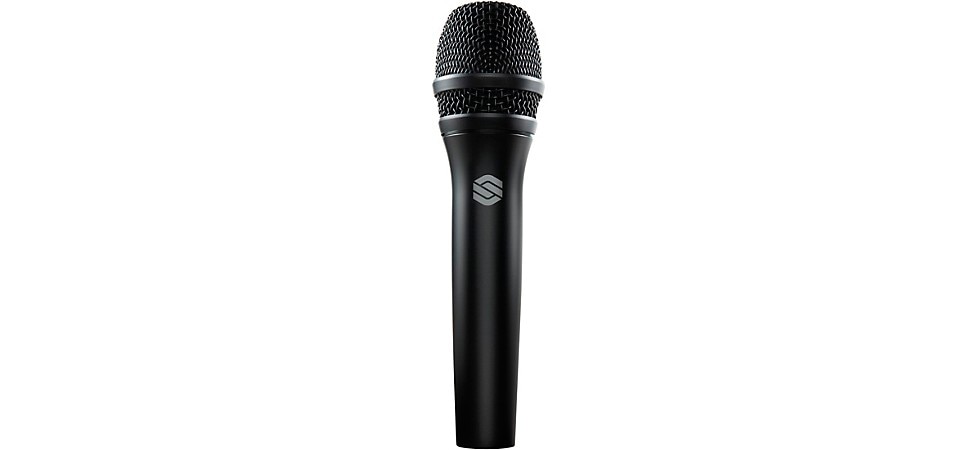
The Sterling Audio P20's custom-tuned capsule was designed to help your voice cut through even the densest mixes.
As a group, dynamic mics also are relatively affordable, and many of the big-name mic manufacturers have economy-series mics that give you great performance for a low price.
Ribbon Microphones
Ribbon microphones operate on the same principle as other dynamic mics, but instead of a diaphragm, they employ a thin ribbon that vibrates to vary voltage. Ribbon mics are used in the studio for recording voices and a broad range of instruments. They soften the sound and impart warmth to recorded material. Some of the more well-known makers of ribbon microphones include Royer Labs, Beyerdynamic and AEA Microphones.
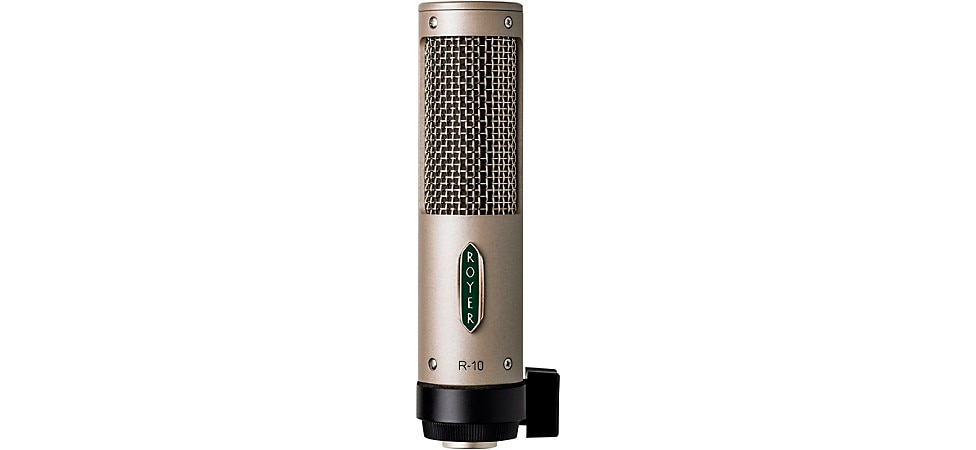
The Royer R-10 Ribbon Microphone is an affordable passive mono ribbon mic designed for capturing sources in a studio or live-sound environment.
Want to learn more about ribbon microphones? Check out our factory tours and interviews with the teams of Royer Labs and AEA.
Application-Specific Dynamic Mics
In recent years, microphone manufacturers have begun producing dynamic microphone models designed for specific instruments. Here are a few examples:
Drum and Percussion Microphones
Because each drum and cymbal within a drum kit creates its own unique sounds, mics are tailored for kick drums, snares, toms, and cymbals. Each mic has a response curve and profile best suited to the drum for which it’s used. Because of their ability to handle high frequencies and sounds with a rapid attack, small-diameter condenser mics are often used to capture the sound of cymbals. Drum mics are often sold in special packs of four, five, or more microphones that will save you money and guarantee that you have the whole range of your drum kit’s sounds covered.
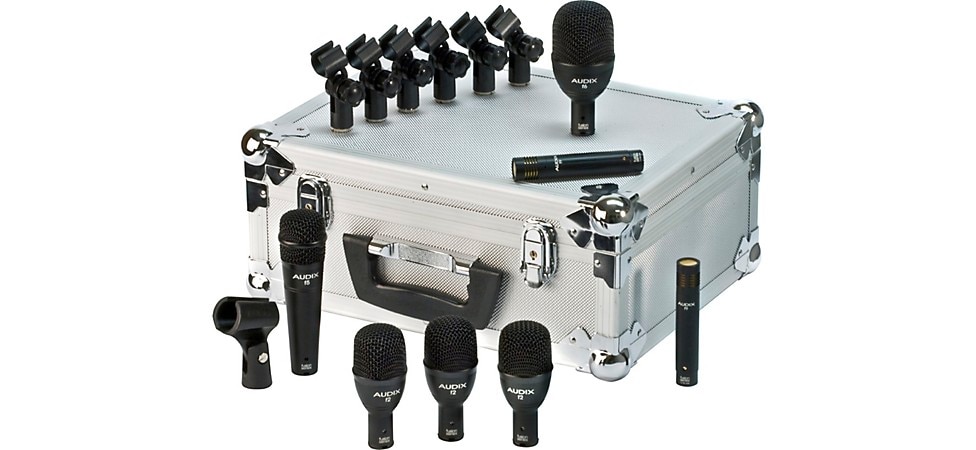
The very affordable 7-mic Audix FP7 Drum Mic Pack includes everything you need to mic up a full-sized drum kit.
Microphones for Reed, Brass, Woodwind, and Stringed Instruments
Typically small and lightweight, these microphones have a frequency response tailored to the specific instrument, and they employ a special mounting system that attaches to the instrument's bell or body. Since these mounts and their attached mics move with the instrument, they maintain a set distance for greater volume consistency while giving the artist freedom of movement. Clip-on microphones have been developed for violin, viola, cello, and double bass that eliminate the need to retrofit priceless instruments with pickups.
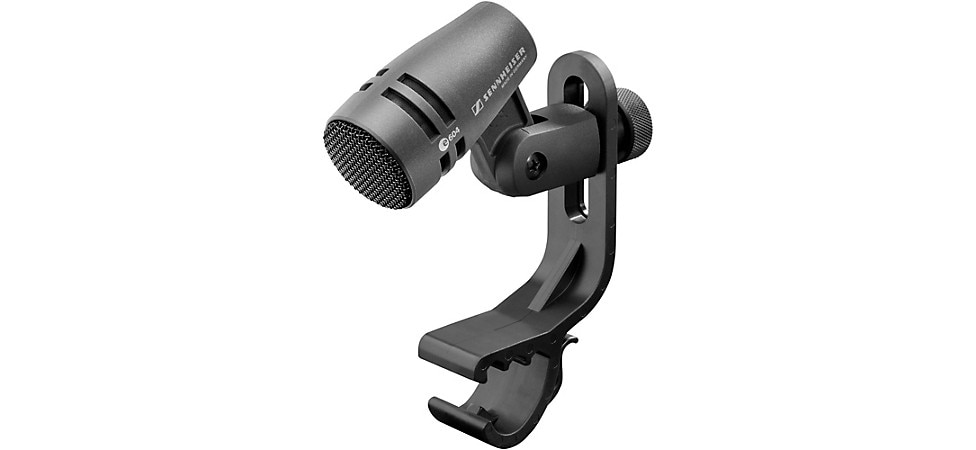
The Sennheiser e 604 dynamic cardioid instrument microphone is a great-sounding choice for brass, woodwind and acoustic drums.
Bullet (Harmonica) Microphones
Bullet microphones, also known as harmonica microphones, are specially made for harmonica players. With a short, round casing, they can easily be cupped in the player’s hands along with the harmonica, and their crystal diaphragm elements produce the distorted sound beloved by blues harp players.
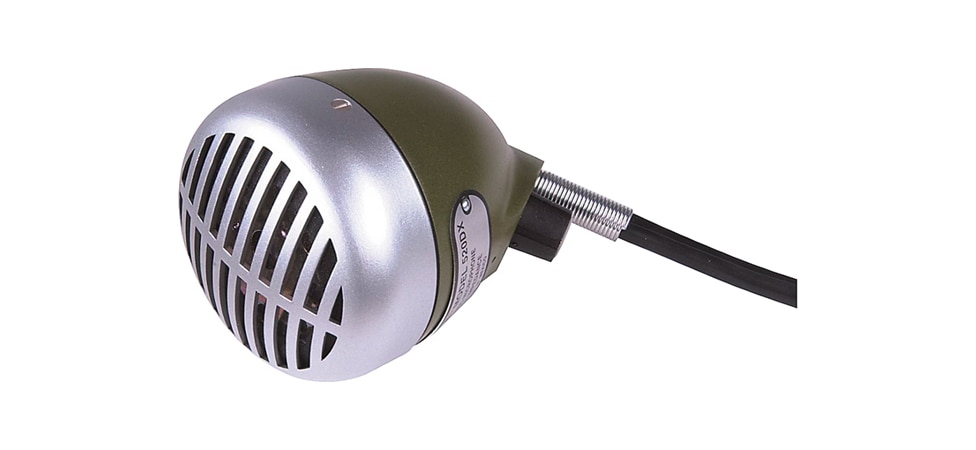
The Shure 520DX Green Bullet mic is shaped for easy cupping that produces classic, distorted Chicago harp sound.
Wireless Microphones
Though they are electronically similar to wired microphones, wireless microphones include a transmitter to allow a greater range of movement. A battery-powered transmitter in the microphone’s body transmits the mic’s signal to a receiver unit that is connected to a mixer or PA system. The signal is transmitted using radio frequencies. The most common wireless systems use digital, UHF, or VHF frequencies. Affordable wireless mic systems that deliver good sound and bang for the buck typically use the UHF band. The best systems use digital technology that optimizes audio quality while also eliminating noise and signal dropouts that can be an issue with low-quality systems. Interference generated by devices such as radios, wireless phones, garage-door openers, and even fluorescent light fixtures are detected and eliminated by such digital circuitry.
Another way better-quality wireless mic systems deal with reception problems is through diversity technology. Receivers that have what is referred to as true diversity contain two separate radio modules, each connected to its own antenna. When interference is detected, a circuit compares the signal received by each module/antenna and uses whichever one is cleanest.
It’s important to note that receiver microphone frequencies must match. This is not an issue when you purchase a full system since the frequencies have been matched by the manufacturer. But if you are buying microphones and receivers separately, be sure they operate on the same bandwidths.
Wireless vocal mics come in a number of formats including hand-held models, clip-on lavalier mics, and headworn mics that have a headband. Some manufacturers also produce plug-in transmitters with which you can convert a standard wired mic to wireless operation.
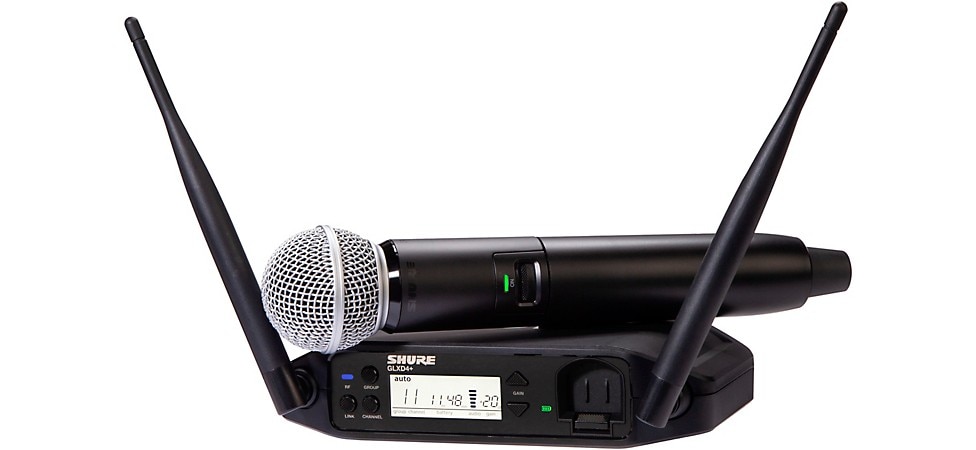
The Shure GLX-D24+ Vocal System With SM58 combines a benchmark SM58 mic with Automatic Frequency Management technology, best-in-class intelligent lithium-ion battery rechargeability and dual-band (2.4GHz and 5.8GHz) wireless frequency capability.
Untethered from mic stands or amp cables, wireless instrument mic systems give the musician the freedom to move around the stage. There are wireless systems for brass, woodwind, and string players too that are essentially smaller wireless microphones that clip onto the instrument.
As you explore the Musician's Friend mic selection, descriptions will usually include information about the various model’s best applications. Keep in mind that the majority of on-stage mics are used for vocals. Accordingly, you will have many choices when it comes to choosing dynamic mics for this purpose.
Learn more about wireless mics with our Wireless Systems Buying Guide.
Condenser Microphones
In condenser mics, a thin conductive diaphragm is located close to a metal plate called a backplate, creating a capacitor. This capacitor is supplied with a small electric charge, either from phantom power or from a battery. When the pressure of sound waves causes the diaphragm to vibrate, it changes the distance between it and the backplate, thus causing variations in the output voltage. This varied output creates the microphone's electronic signal.
Condenser microphones use an external power supply, internal batteries, or phantom power supplied by the mixer input. These days, most mixers have phantom power on mic inputs, but if you are using an older mixer, you’ll want to make sure it has phantom power before buying a condenser that requires it.
There are many different types of condenser mics, and most of them are used for recording. A few are used for live sound applications such as overhead miking of choirs, pianos, acoustic stringed instruments, and certain percussion instruments such as cymbals.
Here are the main types of condenser microphones:
Large-Diaphragm Condenser Microphones
Sizable recording microphones with diaphragms from three quarters to an inch in diameter, large-diaphragm mics are usually very sensitive. They almost always require external power and suspension mounting that isolates the mic from external vibrations.
The large size of these mics and their need for suspension makes them unsuitable for such applications as miking drum kits, where space is tight, but they are excellent for recording voices and a wide variety of instruments. That is why they often serve as a recording studio's all-purpose microphones.

The AKG C314 professional multi-pattern condenser microphone has advanced features that help artists fine-tune their signature sound including four selectable polar patterns, the lowest self-noise in its class, and an overload detection LED.
As you may have guessed, the best mics in this category can be very expensive; however, a number of affordable models have become available in recent years. These cost-conscious models mimic the design of the more expensive mics, and they work quite well for nonprofessional recording.
Learn about AKG's storied microphone history.
Side-Address Condenser Microphones
Another type of large-condenser mic, side-address microphones usually have a wide, flat windscreen over a large diaphragm. These are positioned horizontally and aimed toward the side at a 90-degree angle. Thus, if the mic is vertical, a singer seems to be addressing it from the side, hence its name.
Dual-Diaphragm Condensers
Usually, dual-diaphragm mics are configured the same as side-address mics. However, they have two diaphragms aimed in opposite directions.
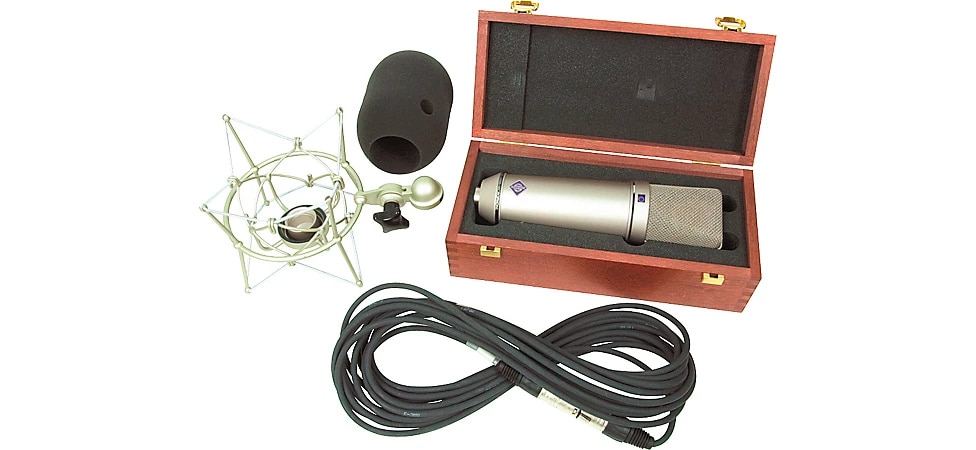
The Neumann U87 Ai microphone's dual-diaphragm design gives it plenty of sonic flexibility, offering a variety of polar patterns to capture your sound.
Naturally, dual-diaphragm mics are effective for recording duets or larger groups, and they can be great for picking up room ambiance. A dual-diaphragm condenser mic makes it easier to balance two simultaneous sound sources as opposed to using two single-diaphragm mics.
Tube Condenser Microphones
The vintage models you associate with old-time recording and broadcast studios are tube condenser microphones. Because they impart a warmth and a rounded sound to recorded material—much like a tube guitar amp colors the instrument's sound in pleasing ways—they still are made and used in professional studios to this day.
These mics require a dedicated power supply, powered mixer, or a mic preamp that provides the correct voltage.
Small-Diaphragm Condenser Microphones
With a diaphragm a half-inch or less in diameter, small-diaphragm microphones are used in many recording applications and occasionally in live settings.
These mics do especially well at reproducing higher-frequency sounds and sound sources that change quickly in volume or have a sudden attack. One common application is overhead miking of cymbals. Like other condensers, they depend on phantom power or a battery to operate.
USB Microphones
The enormous popularity of computer-based recording has revolutionized the way music is recorded. When it comes to routing your music through the soundcard of a computer, there are many possibilities available today, ranging from sophisticated digital audio workstations (DAWs) and digital mixing boards to simpler interfaces offering connections for a single mic and /or instrument. Simplest of all are USB-powered mics that offer plug ‘n’ play convenience. These budget-friendly microphones are a great choice for someone who needs quick, convenient solutions. So, whether you're just dipping your toes in the recording waters, or you're a budding podcaster who needs a straight-forward solution, USB microphones are a fantastic choice.
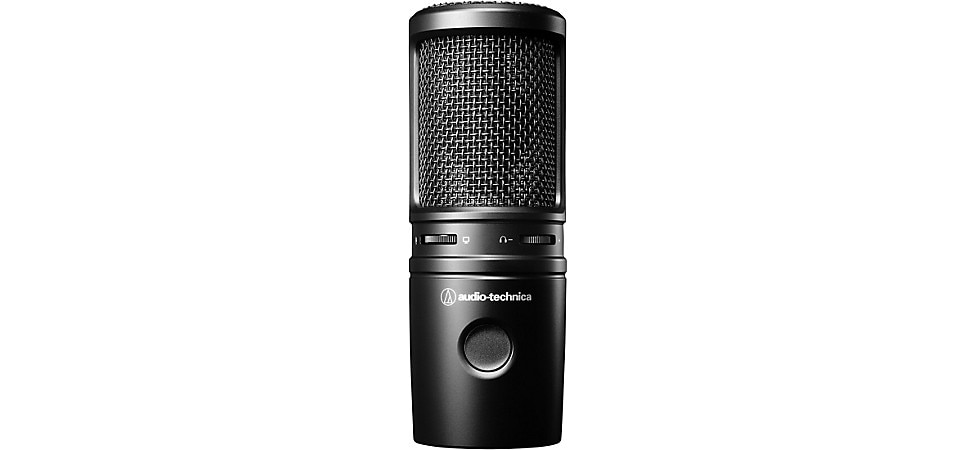
An update on the popular Audio-Technica AT2020USB+, the AT2020USB-X offers convenient plug-and-play USB-C connectivity combined with studio-worthy sound capture.
There’s a healthy selection of USB-compatible microphones to choose from these days. They include both condenser and dynamic mic types configured for specific applications such as vocal and instrument miking. Many work seamlessly with iOS and Android apps that turn your smartphone or tablet into a highly portable recording studio.
Considering starting a podcast and don't know what gear you need? Learn more with our Podcast Audio Gear Buying Guide.
Shotgun Microphones
Having a very narrow and extended polar pattern, shotgun microphones are often used for broadcasts such as sporting events because they excel at picking up specific sound sources from a distance.
Boundary Microphones
These mics are usually are placed on a flat surface such as a floor, table, ceiling, or wall which help gather the sound. Boundary mics are quite versatile and are often used on podiums, at conferences, in boardrooms, and in the studio. They are useful for various sound-reinforcement applications that require coverage of a large area.
Roll-off and Bass Attenuation Switches
These controls are found on many condenser microphones and enhance their versatility. The roll-off switch alters the frequency range, usually on the low end, reducing response or cutting it off below a certain level. The roll-off switch is used in live sound situations to reduce low-end rumble. Rolling off the bass keeps the PA power amp from having to deal with frequencies below its capability. In recording, rolling off the bass can add clarity. Attenuation switches alter a mic's sensitivity or volume, padding it so that a high volume source doesn't overload the mic, causing distortion.
Microphone Packages
Equipping your home studio with a versatile selection of mics and mic mounts can be an expensive proposition. So can equipping your band with a collection of stage-worthy mics and mic stands. At Musician’s Friend we offer many different mic packages that include multiple mics, stands, mounts, cables and other mic accessories. These packages contain carefully matched components, and offer significant savings compared to buying those components separately.
Microphone Accessories
There are numerous mic accessories designed to optimize your microphone’s performance. Some of them, including mic stands, cables, and mounts, are pretty much essential. Other items such as pop filters, windscreens, shockmounts, and isolation screens may also be critical, depending on how and where you are using your mic. Whether you’re looking for mic replacement parts such as a new grille for that battered SM58, or a mount that’ll puts your mic precisely where you want it, you’ll find it at Musician’s Friend.
Signing Off: Some Final Comments
One of the most helpful things you can do in selecting a mic is good, old-fashioned research. Ask others about the mics they use, read reviews by pro-audio specialists as well customer-written reviews on our website.
Another strategy to consider is sticking with the established, big-name companies that make professional mics. Many of them have lower-priced models that deliver surprisingly good sound. You can spend as little as $40 to $50 and get a decent dynamic stage mic.
For recording mics, the more you spend directly correlates with the quality of your recordings, so it is best to avoid the very lowest-priced models. Starting at around $100, you can find condenser recording mics that serve very nicely in home recording studios.
Of course, it’s safe to assume that the more you spend, the better the mic you’ll get. But be realistic. Work with your budget, and ensure your choice is appropriate for what you want to achieve. A mic’s overall quality should match the audio quality of the rest of your signal chain.
For a DJ who needs to talk to his audience occasionally during a show, a low-priced mic can be perfectly adequate. If you need a vocal mic for your garage band, an affordable mic will do for that application, too.
We want you to be pleased with your microphone purchase, and we offer a generous return policy so you can order with confidence. After reading this guide, if you’re still not sure what mic is right for you, we invite you call to one of our friendly and knowledgeable Gear Advisers for further assistance.





































































































































